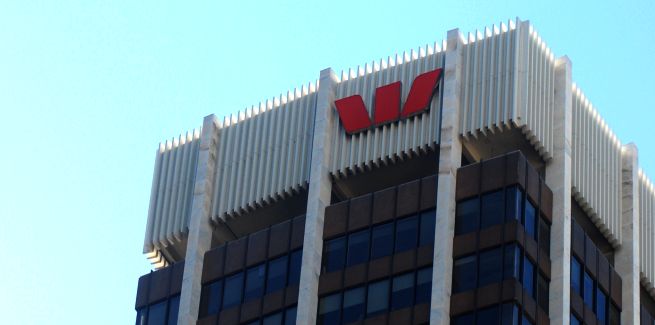Earlier this month, Westpac Group’s shares were placed in a trading halt to facilitate a placement worth approximately $2.5 billion in capital.
The capital raising consisted of a fully underwritten $2-billion institutional share placement and a non-underwritten share purchase plan (SPP) targeted at raising $500 million in funds.
According to Westpac, the capital raising was designed to provide an increased buffer above the Australian Prudential Regulation Authority’s (APRA) “unquestionably strong” common equity tier 1 (CET1) capital ratio benchmark of 10.5 per cent.
The bank added that the raising would also create “flexibility for changes in capital rules”, and for “potential litigation or regulatory action”.
Westpac has since completed the first phase of its capital raising, generating $2 billion in revenue from its placement, with the second phase of the capital raising, the SPP, still underway, and due to close on Monday (2 December).
However, following discussions with the Australian Securities and Investments Commission (ASIC), Westpac has announced that it would provide investors in its SPP with the opportunity to withdraw their interest, in light of financial crimes regulator AUSTRAC’s action against the bank for alleged breaches of anti-money laundering laws.
The withdrawal option will only be offered to investors who applied for shares under the SPP prior to the AUSTRAC announcement on 20 November.
Eligible applicants who opt to withdraw their investments have until 6 December to request the option.
Westpac noted that all other terms and conditions of the SPP remain unchanged.
The bank is set to announce the SPP results on 10 December, with shares to be issued the following day, and commence trading on 12 December.
Last week, AUSTRAC revealed that it was seeking civil penalty orders against the big four bank over 23 million alleged breaches of anti-money laundering laws.
According to the regulator, the bank failed to appropriately monitor outgoing international funds transfer instructions (IFTIs) of customers, including those which it alleged are “consistent with child exploitation typologies”.
One of the more damning examples in AUSTRAC’s Statement of Claim are the assertions that one such customer transferred money to a person located in the Philippines who was later arrested in November 2015 for child trafficking and child exploitation involving live streaming of child sex shows.
The revelations sparked the resignation of former Westpac CEO Brian Hartzer, long-serving board director Ewen Crouch, and the bringing forward of chairman Lindsay Maxsted’s retirement.
CFO Peter King will serve as interim CEO while Westpac searches for a permanent replacement.
The bank has now released a response plan to the AUSTRAC issues and work is ongoing to identify accountability and bolster its AML/CTF work.
Westpac appoints independent watchdog
The bank has also announced the appointment of IBM subsidiary Promontory to undertake its External Accountability and Financial Crime Program Review as part of its response plan to the AUSTRAC investigations.
Chairman Lindsey Maxsted noted that the review, commissioned by the newly appointed Westpac Board Financial Crime Committee, would commence immediately.
“Westpac is determined to urgently address the issues that have given rise to the AUSTRAC statement of claim,” Mr Maxsted said.
“We are genuinely remorseful for any hurt caused by the shortcomings in our systems and processes and understand we need to find the root causes and ensure accountability.”
Westpac’s committee would oversee the review on behalf of the board and will be chaired by non-executive director Peter Nash and will also include non-executive directors Nerida Caesar, Steven Harker, and Margaret Seale.
“I am pleased Promontory has agreed to undertake this urgent external review given their background and global expertise on this matter,” Mr Maxsted added.
“They will be provided all the resources they need to ensure a thorough, rapid and independent analysis is undertaken.”
Mr Maxsted said Westpac’s first priority would be reviewing issues associated with its LitePay service, which it suspended upon the announcement of AUSTRAC’s action.
“If and where procedural, escalation or accountability failings are confirmed through Promontory’s review, there will be immediate action taken,” Mr Maxsted said.
Commenting on their appointment as an independent watchdog, Promontory Australasian practice leader Jeff Carmichael said: “I am pleased to have been asked to undertake this important review. With the rapid digitisation of the global economy, the proliferation of financial crime has increased exponentially.
“Governments and financial institutions all around the world are grappling with the complexities associated with both monitoring and managing the reporting of suspicious activity given the huge volumes of transactions taking place every day.
“As we have seen with the Westpac matter, the implications of systems, personnel or governance failings around financial crime can be very serious.”
In addition to Promontory’s appointment, Westpac revealed that it will also establish an Accountability Review advisory panel of three independent experts to consider Promontory’s report and provide recommendations on governance as well as board accountability.
The makeup of the panel will be confirmed in the days ahead.
[Related: Westpac fears ‘dangerous’ board cull]
 ;
;

Comments (0)